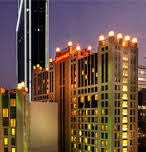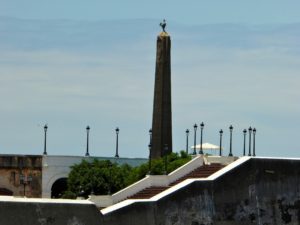Fjords of Norway
What are fjords? They were created by massive glaciers that carved massive u-shaped canyons of rock over 3 million years ago.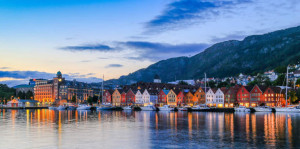 Bergen.
Bergen.
There are several ways to experience the 100s of fjords in Norway. By land, Oslo is the Capital with international flights, and is worthy of a few days touring. Then travel by car or better yet, train to Bergen, Norway’s second city and gateway to the biggest and most impressive of the big three fjords. Don’t miss the charming city of Flam.
There are driving and train itineraries that combine one or many daytrips. The road system is well developed and offers extensive access to many fjords while the big ships tend to focus on a few of the best. The benefit is more time to explore village life, the spectacular scenery away from the fjords and of course a slower viewing experience of the fjords themselves.
The best way to experience these incredibly beautiful ocean canyons is best seen by water. The range of options vary from the large ocean cruise liners to small intimate local watercrafts.
 Do not miss the “king of the fjords”, Sognefjord. At 127 miles long and the deepest at 4,294 feet deep, the sheer rock walls may blot out the sun or the many waterfalls fall hundreds of feet to the sea. The mighty Geirangerfjord and Naereyfjord are Unesco Hertitage sights with waterfalls and little Bays with villages of typical red buildings and charming white churches. On land there are many touring options. One of the most popular is skiing world class slopes with 30 feet of snow in the middle of summer.
Do not miss the “king of the fjords”, Sognefjord. At 127 miles long and the deepest at 4,294 feet deep, the sheer rock walls may blot out the sun or the many waterfalls fall hundreds of feet to the sea. The mighty Geirangerfjord and Naereyfjord are Unesco Hertitage sights with waterfalls and little Bays with villages of typical red buildings and charming white churches. On land there are many touring options. One of the most popular is skiing world class slopes with 30 feet of snow in the middle of summer.
The best time to go is May to September during the longest days of sunshine. Winter is also possible offering a stormy and unique look without the crowds.
Resources: www.fjords.com, www.rccl.com, www.visitnorwat.com
Stockholm Archipelago 
There are over 24,000 islands that make up the Stockholm Archipelago. Start your journey with any itinerary that includes Stockholm, the capital of Sweden. We suggest at least three days, the more days the better. Stockholm will not disappoint.
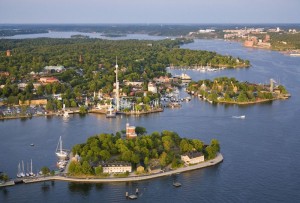 At anytime, carve out some time for one or more day trips to the more popular islands of Finnhamm, Grinda, Nattaro or Uto. There are one to five day passes if you would like to use public transportation. All have quaint villages for lunch, snacks or fishing supplies.
At anytime, carve out some time for one or more day trips to the more popular islands of Finnhamm, Grinda, Nattaro or Uto. There are one to five day passes if you would like to use public transportation. All have quaint villages for lunch, snacks or fishing supplies.
Just wander or hire a guide to take you to places of your particular interest. There are dozens of islands with bright red summer homes, historic palaces and castles. There are also expansive forests, fields of flowers and long sandy beaches.
If you are traveling by cruise ship, do check out the time of the sailing into or out of the Archipeligo. Find the best upper deck in the front of the ship for a bird’s eye view from above the islands. Alternatively, local Steamboat cruises run all Summer and Fall.
 You will be enchanted what ever your choice. Best time to go is May to September for the long warm Summer/Fall days
You will be enchanted what ever your choice. Best time to go is May to September for the long warm Summer/Fall days
Resources: www.waxholmsbolaget.com, www.stockholmarchipeligo.com, www.visitstockholm.com
St. Petersburg from the Neva River
 This journey can be done in just a few hours and may be the highlight of a trip to St. Petersburg. It was such a memorable experience, it had to make this list, especially now that all the major sites have been restored to their original glory. Plan at least a few additional days for the must see sights you should first see from this water journey.
This journey can be done in just a few hours and may be the highlight of a trip to St. Petersburg. It was such a memorable experience, it had to make this list, especially now that all the major sites have been restored to their original glory. Plan at least a few additional days for the must see sights you should first see from this water journey.
 Depending on the service provider, your boat will most likely begin on the Moika Canal, St.Petersburg primary commercial corridor before sailing into the broad Neva River where you will be greeted by two bridges with bronzed lions, griffins and chariots. To the left bank will be a skyline of churches and palaces. To the right will be the expansive baroque Winter Palace, formerly the residence of the tsars, now part of the Hermitage Museum. This will be one of the ‘must see’ list, plan a half day just for this museum.
Depending on the service provider, your boat will most likely begin on the Moika Canal, St.Petersburg primary commercial corridor before sailing into the broad Neva River where you will be greeted by two bridges with bronzed lions, griffins and chariots. To the left bank will be a skyline of churches and palaces. To the right will be the expansive baroque Winter Palace, formerly the residence of the tsars, now part of the Hermitage Museum. This will be one of the ‘must see’ list, plan a half day just for this museum.
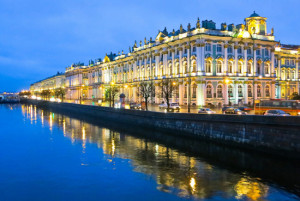 Now, across the river again will be the gleaming white Stock Exchange (now a navel museum and on you ‘must do’ list) and the Peter and Paul Cathedral, another ‘must tour’ sometime in your trip along with a visit to the Peter and Paul Fortress and a day trip to the Peterhof Palace and its fantastic gardens.
Now, across the river again will be the gleaming white Stock Exchange (now a navel museum and on you ‘must do’ list) and the Peter and Paul Cathedral, another ‘must tour’ sometime in your trip along with a visit to the Peter and Paul Fortress and a day trip to the Peterhof Palace and its fantastic gardens.
 Plan to travel between May and July to experience the ‘White Nights’. Book everything in advance, the local bureaucracy is inconsistent and often unreliable. Another note, do NOT drink the water anywhere. Remember good bug spray as it will be peak season for those critters too.
Plan to travel between May and July to experience the ‘White Nights’. Book everything in advance, the local bureaucracy is inconsistent and often unreliable. Another note, do NOT drink the water anywhere. Remember good bug spray as it will be peak season for those critters too.
Resources: www.russia-travel.com, www.russiagateway.co.uk, www.saint-Petersburg.com
Danube, Budapest to the Black Sea
The more popular route for sailing the Danube is Passau, Germany to Budapest adding Vienna and Bratislava along the way. It is a great trip, but alternatively sailing from Budapest to the Black Sea reveals a very different face of the Danube and much of Southeastern Europe.
 You can cruise this route in reverse but we liked the progressively intriguing stops going West to East. Add a few days in Budapest in the beginning because there is a lot to explore. We also added four days in Transylvania at the end just because it was close by and we may not be back in that part of the world anytime soon. Transylvania, by the way, was one of the highpoints of this trip. Think Swiss Alps but at bargain prices for five star touring, food and lodging.
You can cruise this route in reverse but we liked the progressively intriguing stops going West to East. Add a few days in Budapest in the beginning because there is a lot to explore. We also added four days in Transylvania at the end just because it was close by and we may not be back in that part of the world anytime soon. Transylvania, by the way, was one of the highpoints of this trip. Think Swiss Alps but at bargain prices for five star touring, food and lodging.
 Our stops in Croatia and Serbia included small towns of Osijek, Vukovar and Novi Sad each with access to town centers and historical sites, ancient and not so ancient wars after the collapse of Yugoslavia.
Our stops in Croatia and Serbia included small towns of Osijek, Vukovar and Novi Sad each with access to town centers and historical sites, ancient and not so ancient wars after the collapse of Yugoslavia.
 Belgrade was an impressive stop. Lots of history and culture but the agro tourism was the highlight for the day. New and savory farm to table food and super affordable local wines. The scenery just got better and better the farther into the trip. The mountains just kept getting closer and closer until it became a canyon, completely unexpected.
Belgrade was an impressive stop. Lots of history and culture but the agro tourism was the highlight for the day. New and savory farm to table food and super affordable local wines. The scenery just got better and better the farther into the trip. The mountains just kept getting closer and closer until it became a canyon, completely unexpected.
Constanza, Romania was our last port on the river cruise. A beguiling seaport, a mix of East and West, a mix of cultures and civilivations. On the other hand, Bucharest was the bustling, thriving capital of Romania with all the trappings of Western Europe. This trip was a pleasant surprise and a lot of fun.
 Resources: www.oattravel.com, www.vikingriverscruises.com, www.avalonwaterways.com
Resources: www.oattravel.com, www.vikingriverscruises.com, www.avalonwaterways.com
Dalmation Coast
There are many tour operators and ferries that offer sailings around the Adriactic coast. Many of our favorite stops are listed below. Many folks make a whole vacation at just one or two destinations. The area is blessed with a long sunny, warm season from May through October, August can be quite crowded. There are plenty of hotels, resorts and tour operators. We spent 3 weeks island and town hopping, and we are ready to do it all over again but perhaps longer and slower.
The Dalmation coast today consists of the coast lines of Slovenia, Croatia, Montenegro, and Albania. It’s history dates back to pre-Grecian times. It is generally unknown to Western travelers. Those who like the coastal areas of Greece, Italy or most of the Mediterranean are likely to love this region on the Adriactic Sea.
The island of Hvar is famous for its lavender fields, pine covered hills, quaint villages and Venetian styled buildings on the harbor.

The island town of Vis is proud of its scenery, excellent wine, national park and diving sites.
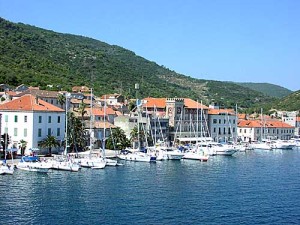 The isle of Brac is world famous for its stone quarry (used extensively for the US White House) and its Golden Cape, a haven for sun worshippers and wind surfers.
The isle of Brac is world famous for its stone quarry (used extensively for the US White House) and its Golden Cape, a haven for sun worshippers and wind surfers.
 Even the little village of Zadar boosts an awesome sea organ that is linked to a state of the art computer system. As you listen to the sea organ and walk on the plaza, the computer responds to your footstep with a stunning light show underfoot.
Even the little village of Zadar boosts an awesome sea organ that is linked to a state of the art computer system. As you listen to the sea organ and walk on the plaza, the computer responds to your footstep with a stunning light show underfoot.
Kotor sits at the end of a fjord-like inlet guarded by a tiny manmade islet Our Lady of the Rocks and its charming church. The town itself is nestled between the sea and the mountains. it is a vibrant town of 13,000 +/- people, a lively town center with lots of places to eat, drink and relax. An ancient wall still survives the ages.
 The village of Korcula is connected to larger island famous for its beaches. The town is known for its medieval walls and towers. Central square is home to the Cathedral of St. Mark dating back to the 14th Century. It feels like a bit of a time warp with its narrow lanes and pathways, tiny shops, and medieval everything.
The village of Korcula is connected to larger island famous for its beaches. The town is known for its medieval walls and towers. Central square is home to the Cathedral of St. Mark dating back to the 14th Century. It feels like a bit of a time warp with its narrow lanes and pathways, tiny shops, and medieval everything.
 The Old City of Dubrovnik is one of the most outstanding cities in the world. It’s history and perserverance have helped the City to become a UNESCO World Heritage site. It is truly a walled city with an incredible setting and port. It seamlessly housed Gothic, Renaissance and Baroque churches, monasteries, palaces, courtyards, squares and fountains. It is alive with its residences and visitors alike. Do walk the walls of the City for the breathtaking views and overlooks. Oh, the food and wine is exceptional almost everywhere.
The Old City of Dubrovnik is one of the most outstanding cities in the world. It’s history and perserverance have helped the City to become a UNESCO World Heritage site. It is truly a walled city with an incredible setting and port. It seamlessly housed Gothic, Renaissance and Baroque churches, monasteries, palaces, courtyards, squares and fountains. It is alive with its residences and visitors alike. Do walk the walls of the City for the breathtaking views and overlooks. Oh, the food and wine is exceptional almost everywhere.
 Last but not least, is the charming city of Split. It has an impressive harbor location with a wonderful promenade, a Roman palace dating to the 4th century, an array of bars, cafes, restaurants, galleries, cathedrals, hotels, beaches and overlooks with fantastic views.
Last but not least, is the charming city of Split. It has an impressive harbor location with a wonderful promenade, a Roman palace dating to the 4th century, an array of bars, cafes, restaurants, galleries, cathedrals, hotels, beaches and overlooks with fantastic views.
 Resources: www.croatia.hr, www.montenegro.com, www.ricksteves.com
Resources: www.croatia.hr, www.montenegro.com, www.ricksteves.com





























